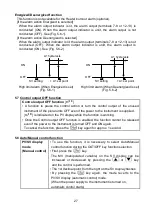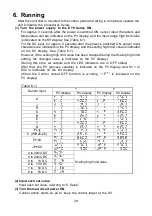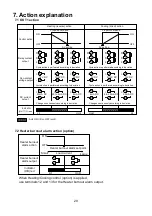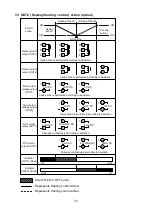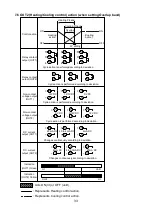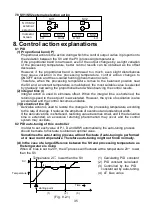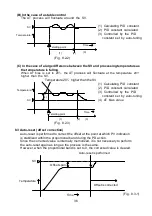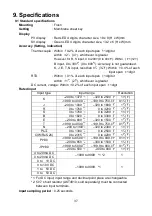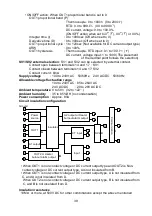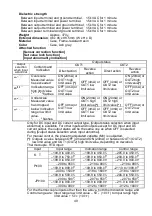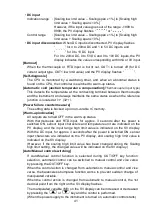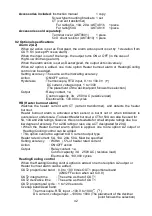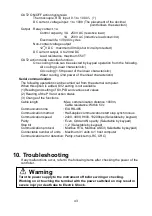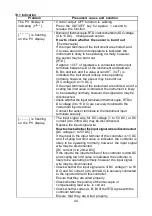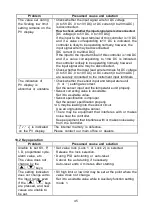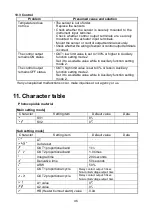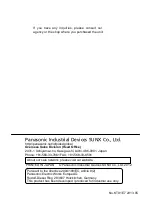
41
•
DC input
Indication range
: [Scaling low limit value – Scaling span x 1%] to [Scaling high
limit value + Scaling span x 10%]
However, if the input value goes out of the range –1999 to
9999, the PV display flashes “
” or “
”.
Control range
: [Scaling low limit value – Scaling span x 1%] to [Scaling high
limit value + Scaling span x 10%]
•
DC input disconnection
: When DC input is disconnected, PV display flashes
“
” for 4 to 20mA DC and 1 to 5V DC inputs, and
“
” for 0 to 1V DC input.
For 0 to 20mA DC, 0 to 5V DC and 0 to 10V DC inputs, the PV
display indicates the value corresponding with 0mA or 0V input.
[Burnout]
When the thermocouple or RTD input is burnt out, OUT1 is turned off (for DC
current output type, OUT1 low limit value) and the PV display flashes “
”.
[Self-diagnosis]
The CPU is monitored by a watchdog timer, and when an abnormal status is
found on the CPU, the controller is switched to warm-up status.
[Automatic cold junction temperature compensation]
(
Thermocouple input type)
This detects the temperature at the connecting terminal between thermocouple
and the instrument, and always maintains the same status as when the reference
junction is located at 0
(32
)
.
[Power failure countermeasure]
The setting data is backed up in non-volatile IC memory.
[Warm-up indication]
All outputs are turned OFF in the warm-up status.
With thermocouple and RTD input, for approx. 3 seconds after the power is
switched ON, sensor input characters and temperature unit are indicated on the
PV display, and the input range high limit value is indicated on the SV display.
With the DC input, for approx. 3 seconds after the power is switched ON, sensor
input characters are indicated on the PV display, and scaling high limit value is
indicated on the SV display.
(However, if the scaling high limit value has been changed during the Scaling
high limit setting, the changed value will be indicated on the SV display.)
[Auto/Manual control switching]
If Auto/Manual control function is selected during OUT/OFF key function
selection, automatic control can be switched to manual control and vice versa
by pressing the OUT/OFF key.
When the control action is changed from automatic to manual control and vice
versa, the balanceless-bumpless function works to prevent sudden change of
manipulated variable.
When the control action is changed from automatic to manual control, the 1st
decimal point from the right on the SV display flashes.
The manipulated variable (MV) on the SV display can be increased or decreased
by pressing the
or
key and the control is performed.
(When the power supply to the instrument is turned on, automatic control starts)

